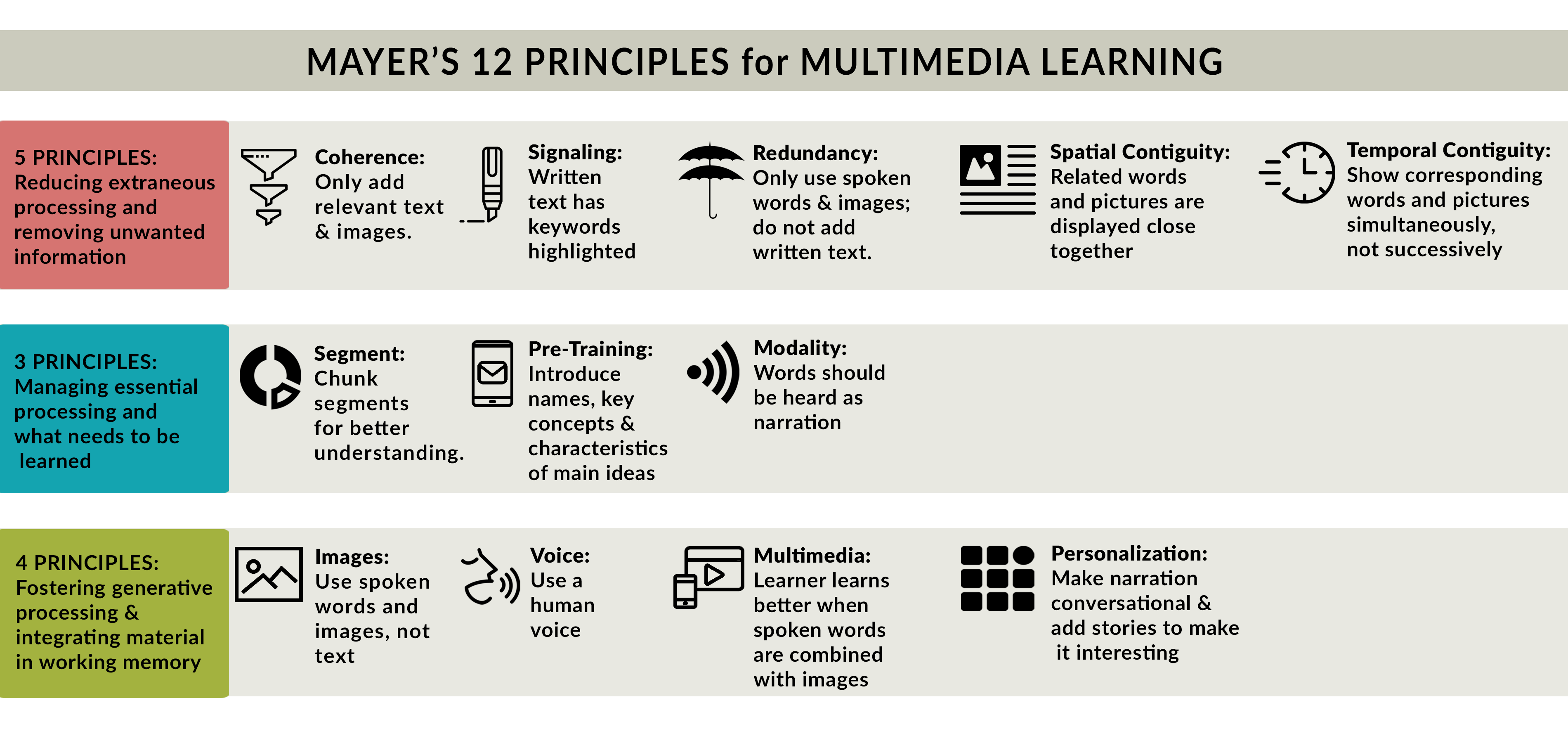Topic outline
-
-
Richard Mayer's Multimedia Principles can be used as a set of guidelines to help you create effective multimedia presentations that enhance comprehension and retention for your students. The principles are based on research into Cognitive Load Theory and they provide a framework for optimising the use of text, images, audio, and video in educational materials.
These principles aim to:
- reduce extraneous processing (cognitive processing that doesn’t support intended learning outcome),
- manage essential processing (cognitive processing aimed at representing the intended material effectively for learning), and
- foster generative processing (cognitive processing aimed at encouraging motivation for learners to use available cognitive capacity).
Simplified List of all 12 Principles
- Coherence Principle – People learn better when irrelevant words, pictures and sounds are excluded.
- Signalling Principle – People learn better when important sections of
material are highlighted, or hierarchical organisation / headings are added.
- Redundancy Principle – People learn better from graphics and narration without the addition of on-screen text.
- Spatial Contiguity Principle – People learn better when corresponding words and pictures are presented displayed in close proximity to each other.
- Temporal Contiguity Principle – People learn better when words and pictures are shown at the same time, not one after the other.
- Segmenting Principle – People learn better from a multimedia lesson when it is presented in user-paced segments rather than as a continuous unit.
- Pre-training Principle – People learn better from a multimedia lesson when they know the names and characteristics of the main concepts.
- Modality Principle – People learn better from graphics and words heard as narration than from animation and on-screen text.
- Multimedia Principle – People learn better from words and pictures than from words alone.
- Personalisation Principle – People learn better from multimedia lessons when words are in conversational style rather than formal style.
- Voice Principle – People learn better when the narration in multimedia lessons is spoken in a friendly human voice rather than a machine voice.
- Image Principle – People do not necessarily learn better from a multimedia lesson when the speaker’s image is added to the screen.
![Mayers-Principles]()
(Image sourced from Rollins School of Public Health)
This article provides further context and examples for the 12 principles. Have a read through and consider how you might apply these to your content if you aren't already doing so.
If you want to delve deeper, this article by Mayer in The Journal of Computer Assisted Learning explains these principles in more detail and provides context of the surrounding research in cognitive load theory.
By following these principles, you can create slide presentations that are more likely to hold students' attention and promote deeper understanding of the course material. In the upcoming Slides for Engaging Learners module, we will further explore the Signalling Principle in relation to designing and delivering a slide presentation.
-
